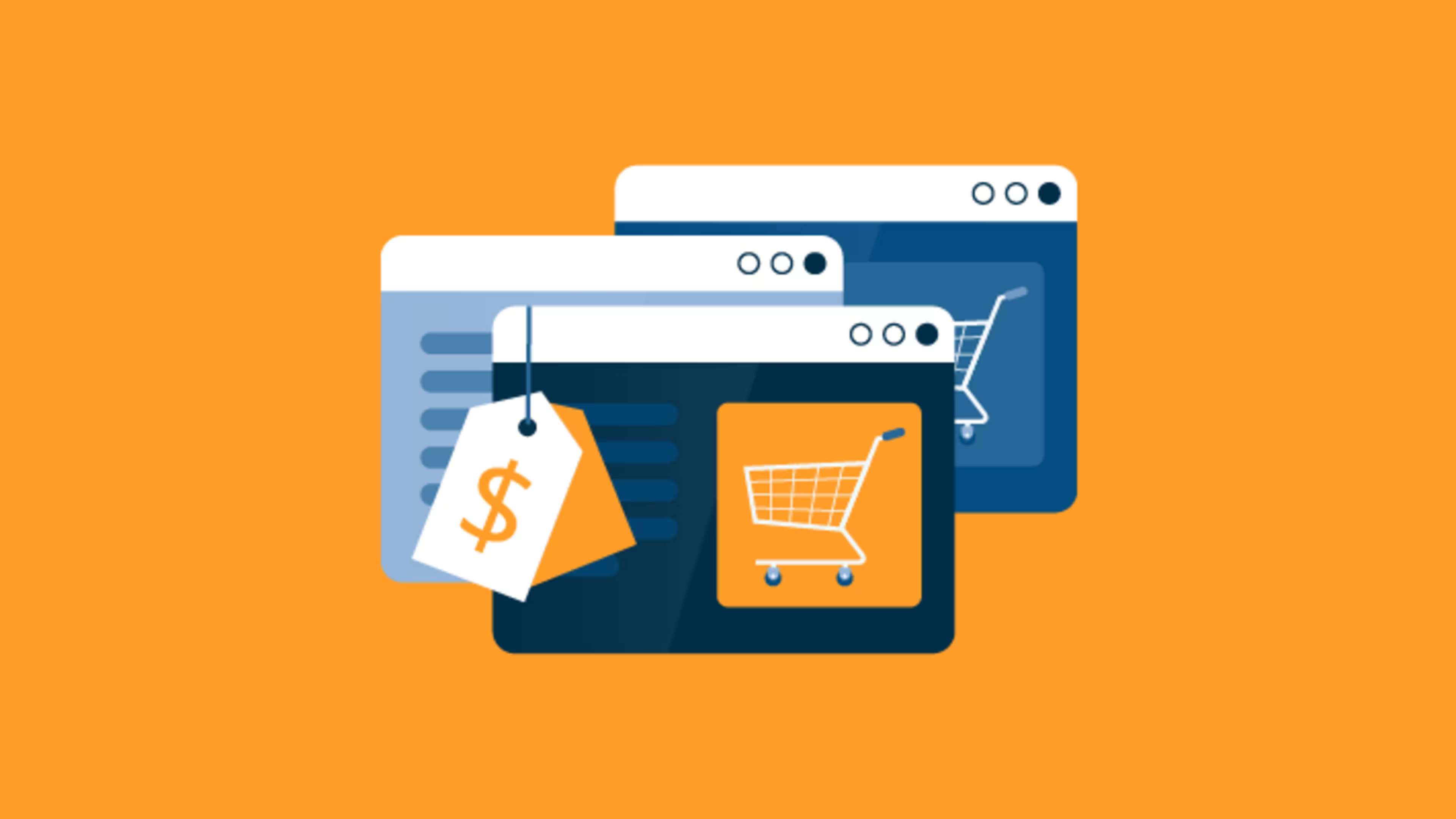Nearly half of small retailers on Amazon say recent fee hikes will make their business less profitable.
Amazon has again raised fees for its third-party sellers, in response to the rising cost of eCommerce logistics. This time, it’s through a new holiday peak fulfillment fee for Fulfillment by Amazon (also known as FBA, Amazon’s sprawling in-house fulfillment service that makes Prime same-to-two-day delivery possible).
While fee hikes are nothing new for FBA users, especially since the beginning of the pandemic, small retailers may be approaching the end of their rope.
According to Capterra’s 2022 Amazon Seller Survey[*], while just 31% of surveyed FBA users currently sell on eCommerce marketplaces other than Amazon, 99% intend to sell on other marketplaces in 2023, including Google Shopping, Facebook Marketplace, and Walmart Marketplace.
If you sell products on Amazon, stick around to find out how the latest FBA fee hikes could impact your business and how to deal with rising eCommerce costs through 2023.
/ Key insights
Fees impact profitability: 48% of small retailers currently selling products through Amazon FBA say the platform’s holiday peak fulfillment fee will make their business less profitable.
Fees will trickle down to customers: In response to the fee hike, 54% of FBA users will raise prices.
Amazon sellers are branching out to other marketplaces: While just 31% of current FBA users also list products on other eCommerce marketplaces like Walmart or eBay, nearly all of them intend to join other marketplaces in 2023.
FBA users are disgruntled about Amazon fees: 50% of FBA users say Amazon’s fees are unfair to small-business owners, including 54% of those who joined Amazon in the past 5 years.
Holiday fees will impact profitability for businesses, prices for consumers
For the first time, Amazon is charging third-party sellers more to use its fulfillment services during the holiday season in the U.S. and Canada, from mid-October 2022 to mid-January 2023. The holiday fee hike follows a slew of fee increases that have driven FBA costs up by an estimated 30% since 2020[1].
In response to the fee hikes, FBA users say they will raise product prices and switch to using Fulfillment by Merchant (FBM), the self-handled fulfillment option for Amazon sellers.
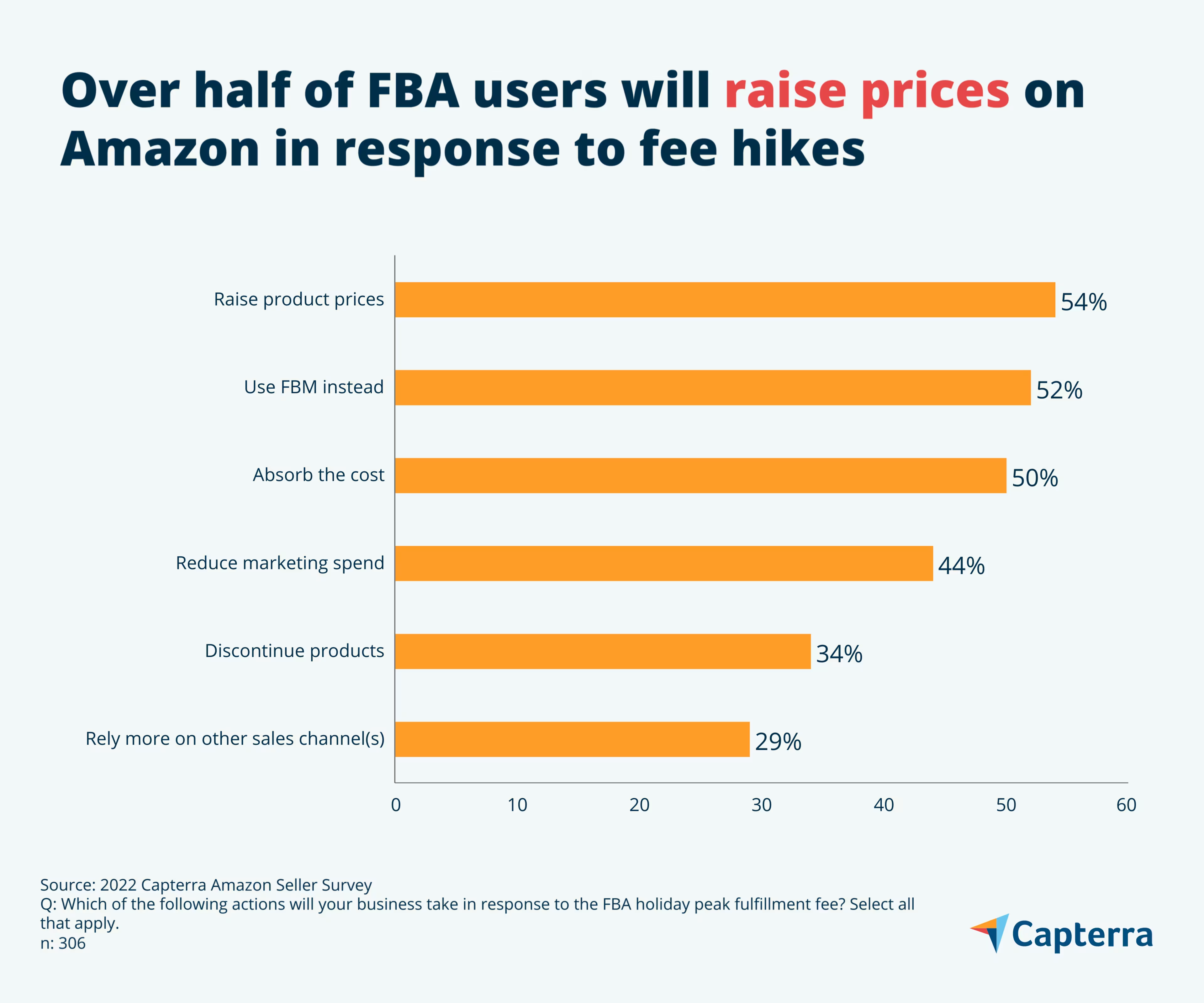
/ A primer on Amazon fulfillment options
Fulfillment by Amazon (FBA)
Third-party seller pays Amazon to store inventory, pack and ship orders, and handle returns
Prime shipping included
Fulfillment by Merchant(FBM)
Third-party seller handles their own storage and logistics or hires a provider
Option to provide Seller-Fulfilled Prime
The increasing cost of using Fulfillment by Amazon is a risk to Amazon, given sellers’ reliance on FBA and customers’ expectations for low prices and fast shipping. By making it more expensive for sellers and consumers to participate in its marketplace, Amazon is opening the door to rivals like Walmart, which offers similarly convenient shopping and selling experiences at a lower cost.
FBA fee hikes impact retailers’ profitability
Almost half of businesses that currently use FBA say Amazon’s holiday peak fulfillment fee will make their business less profitable.
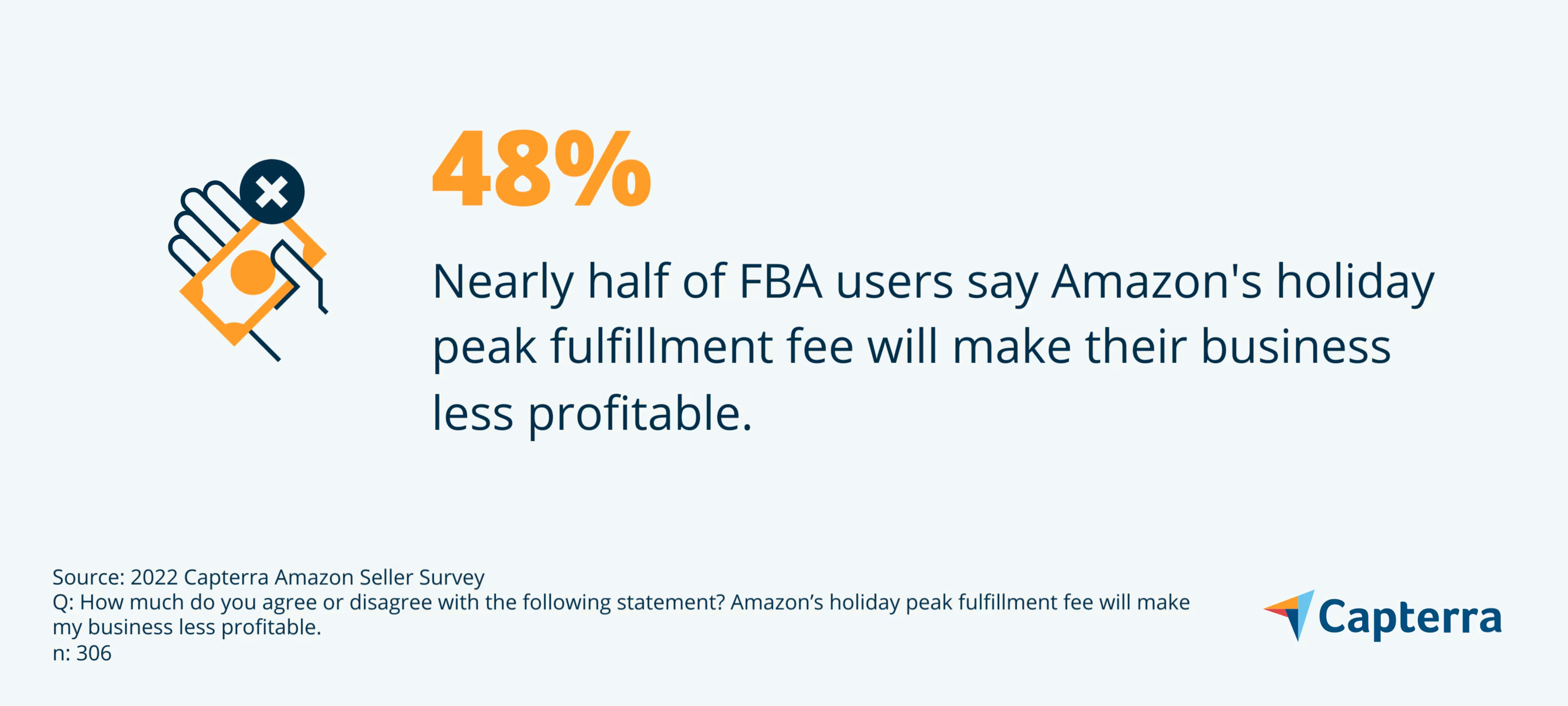
The negative impact to profitability will fall disproportionately on lower earners as well as sellers that are relatively new to the Amazon platform:
FBA users earning $25,000 or less in average monthly revenue from Amazon are significantly more likely to say their profitability will be impacted than those earning more.
Over half of FBA users with less than two years of experience selling on Amazon said the fee would make them less profitable, versus 41% of sellers with five or more years of experience.
These discrepancies could be due to two things:
Higher earners have better buffers to absorb fee hikes. Compared to lower earners, higher-earning FBA users are more likely to sell products in brick-and-mortar stores and on their own websites, and on average have slightly higher existing profit margins.
Prior experience with fee hikes. Amazon veterans have spent years dealing with the ups and downs of selling on the marketplace, and may have developed better strategies for confronting fee hikes and policy changes.
Due to its low barrier to entry, Amazon has developed a reputation as a go-to starting place for retailers and entrepreneurs that are new to eCommerce. Recent fee hikes could make it more difficult for newer sellers to find their footing with FBA. At this point, new businesses might be better off launching elsewhere—perhaps on social media platforms such as TikTok or Instagram, which millions of users are now using as search engines and shopping destinations.
FBA fee hikes will trickle down to customers
The fee will have knock-on effects for consumers as sellers raise prices and switch to FBM, taking speedy shipping into their own hands during the chaotic holiday shopping season. It can be difficult for FBM users to stay Prime-eligible all by themselves—many are only able to do so by paying for a third-party logistics service, which isn’t always more affordable than FBA.
Any way you slice it, Amazon sellers could be paying more for fulfillment this holiday season and into the future, with end-customers picking up the bill. And with so many retailers using FBM, customers could see fewer Amazon Prime-eligible products this holiday season—just 48% of FBA users currently also use SFP.
This all comes at a precarious time for both retailers and consumers—at the end of an inflationary year characterized by reined-in Q4 consumer spending and mounting concerns about a 2023 recession. Higher prices and fewer Prime-eligible holiday gifts could compromise Amazon’s image as a one-stop shop for low prices and convenient shipping.
Sentiment about Amazon is lukewarm among sellers
Nearly all (99%) current FBA users surveyed say they’ll likely continue selling on Amazon in 2023. But they’re also making plans to join other eCommerce marketplaces.
With the dramatic rise in fees, why are so many sellers sticking with Amazon? The majority say they don’t yet have a clear reason to leave Amazon altogether. Many are only able to offer free and fast shipping through FBA, and 29% say their businesses would fail without the ability to sell on Amazon.
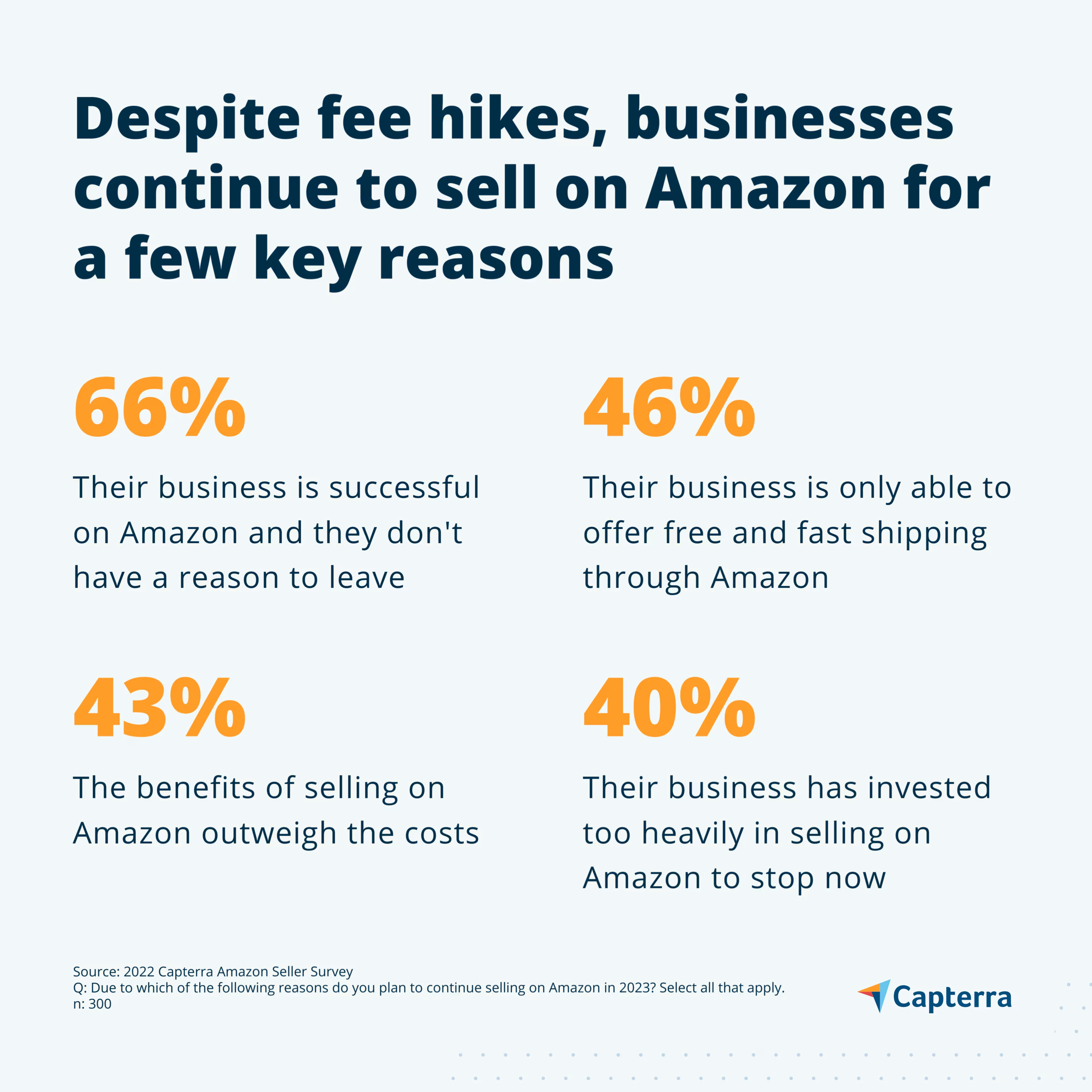
Overall, fewer than half of FBA users say the benefits of selling on Amazon outweigh the costs, while over a third say it’s harder to succeed on Amazon now than it was when they joined the marketplace.
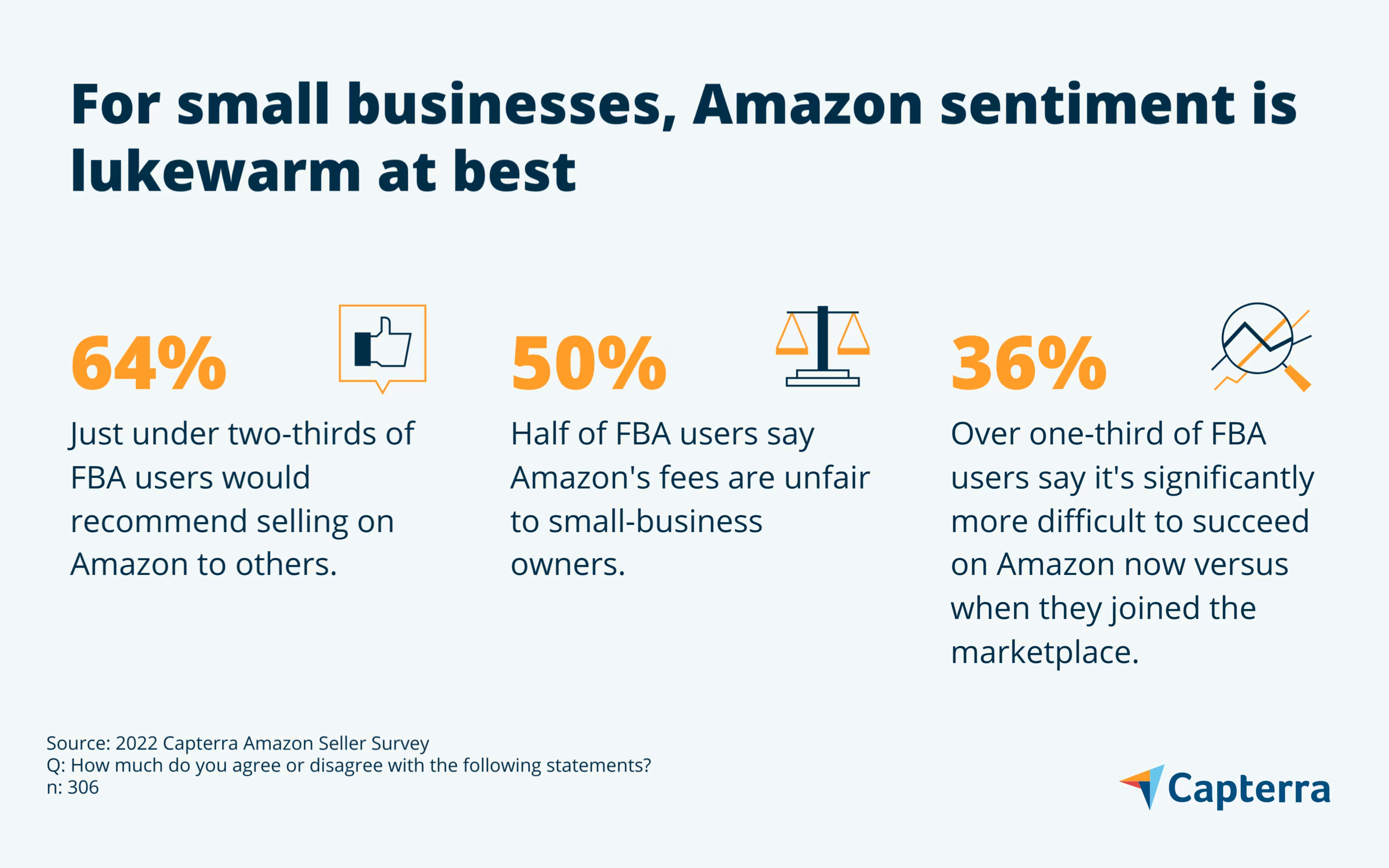
Meanwhile, Amazon’s competitors, such as Facebook and Walmart, have built similar third-party marketplaces in recent years. With so many other places to sell their products, FBA users are beginning to shift their focus away from Amazon.
Businesses are looking beyond Amazon for eCommerce services
Sellers know that if prices climb too high, price-sensitive consumers could find better deals at one of Amazon’s competitors. Take Walmart, for example: Walmart Plus, the brick-and-mortar giant’s Prime challenger, offers member perks that Amazon doesn’t, such as fuel discounts and in-store pickup and return. Young consumers’ preference for social and mobile shopping means Amazon also has to compete with the likes of Meta and TikTok.
Among the group of FBA users that do not currently operate in marketplaces beyond Amazon, 99% intend to diversify next year:
Half will start selling on Google Shopping, eBay, and Facebook Marketplace.
Another 47% will sell on Walmart Marketplace,
Currently, 49% of FBA users also sell products on social media. In 2023, 54% plan to sell on Facebook Marketplace, and many more could join Instagram and TikTok.
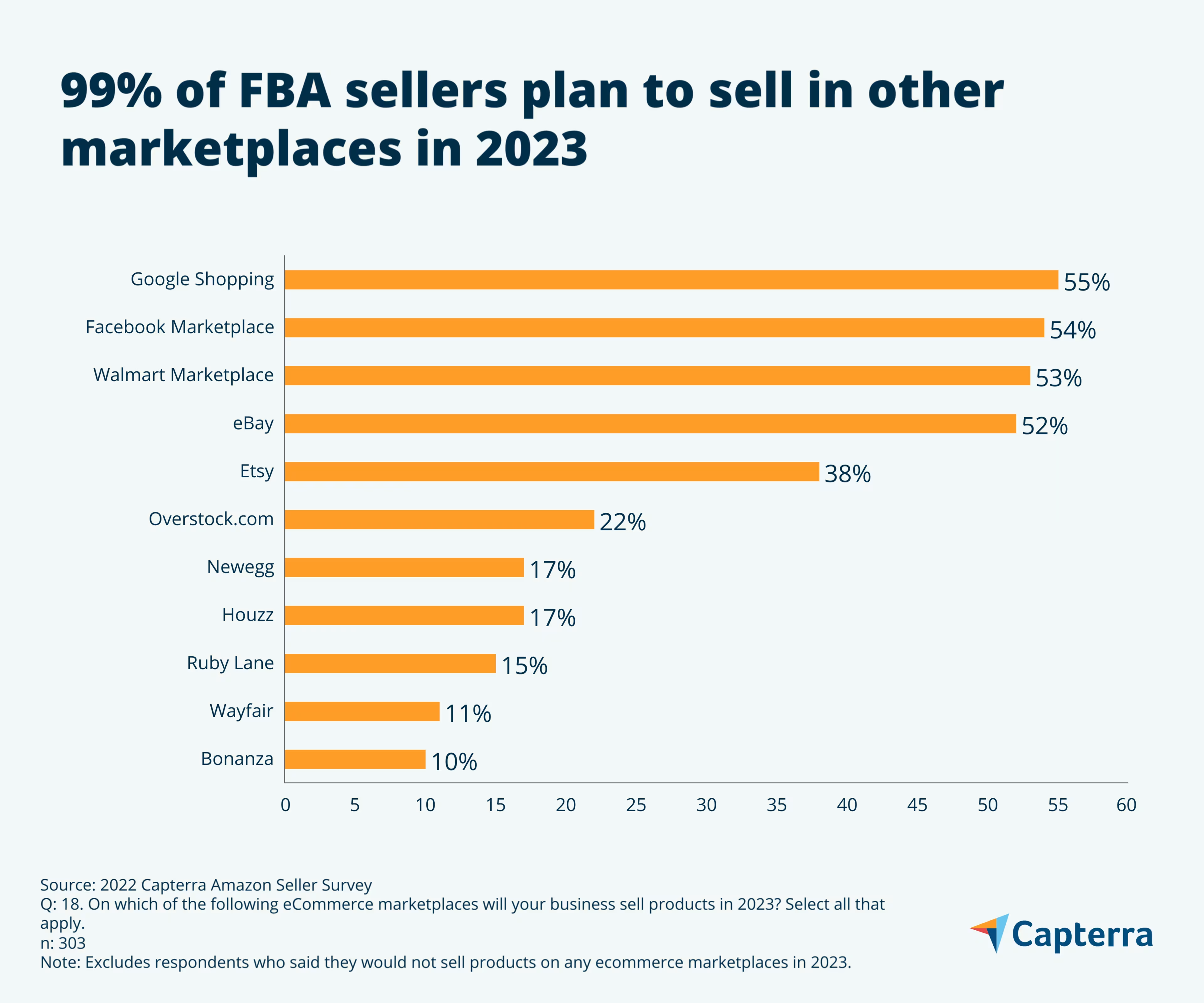
All of this is to say that while Amazon Marketplace likely isn’t going to collapse in the next year, Amazon’s grip on eCommerce in the U.S. will loosen as more sellers branch out to other marketplaces.
That’s good news for small businesses that can reap the benefits of diverse revenue streams while meeting customers at their preferred venues. It’s also good for consumers, who can find the goods they need at prices that aren’t inflated by one marketplace’s skyrocketing overhead costs.
Diversify your eCommerce business in 2023
It’s time to look beyond Amazon to reach customers online. While Amazon’s third-party marketplace likely isn’t going away anytime soon, you can balance the effects of FBA fee hikes by diversifying your revenue streams on other eCommerce marketplaces and social media platforms.
Here’s how your businesses should diversify its eCommerce operations in 2023:
Have a last-mile plan B. Most Amazon sellers use both FBA and self-fulfilled options, which comes in handy when FBA fees rise. Order management and logistics software can help your business handle fulfillment in-house.
Join other other marketplaces. Putting all your chips into Amazon puts your business at the whim of fee hikes, suspensions, and other issues. Explore other eCommerce marketplaces and social media platforms, where your business could increase its reach at a lower cost.
Launch your own eCommerce storefront. Your business should have its own website so customers can buy products straight from the source. There are plenty of easy-to-use website builders to choose from.
Consider whether selling on Amazon is worth the cost to your business. Given Amazon’s track record, FBA fees are likely to increase in the future. Could your business offer better prices sustainably outside of Amazon?
Communicate to customers about price increases. After adding more channels, you may still have to raise prices. Research shows that transparent communication with customers about price changes leads to better outcomes than keeping quiet.
Ecommerce software can help you manage your online operations, from inventory to order fulfillment. Be sure to consider your options for eCommerce tools so you can streamline the transition from Amazon to another eCommerce marketplace, or to your own website.
